case studIEs
Using the many sources at our disposal we can build a comprehensive story of a particular person’s life.
We use a combination of Birth Marriage and Death Records, Parish Records, Street Indexes, Voters Lists, Census and many other record sources and can obtain the relevant certificates for confirmation and to be given to the clients.
Often, we can find out something additional about their life if they served in the military, as what or where they served, if they won any awards or commendations and many other interesting facts like that.
Below are just a few excerpts of some of the fascinating and funny facts we have discovered while researching various people or their family trees.
The Story of Charlotte ‶Lottie″ Dod (1871-1960) Forgotten Inspirational Sporting Hero & her Family from Bebington, Cheshire, England.
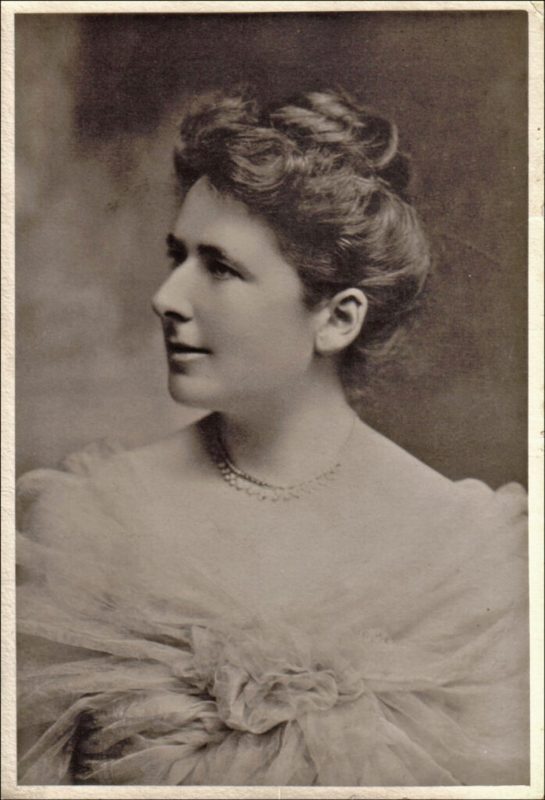
Early Family Life
Charlotte was born 24 September 1871 in Bebington, Cheshire, England, her parents were Joseph and Margaret (nee Aspinall) Dod. She was one of five children Ann (Annie) 1863-1827, William (Willy) 1867-1954, Anthony (Tony) and Philip (1872-1873). They lived in a large house called “Edgeworth”.
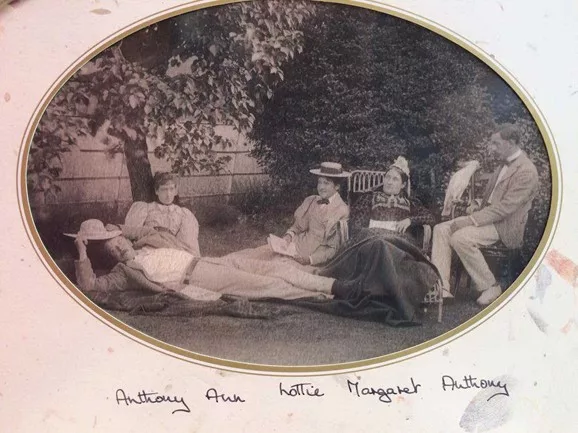
A relaxed shot of Lottie, Annie, Tony and Willy with their mother (it looks as though someone has
labelled the photograph wrongly as Tony has been named twice.
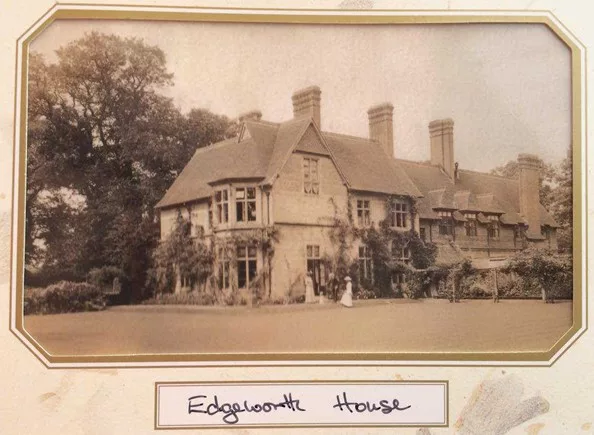
The Dod family are said to be direct descendants of Sir Anthony of Edge who was knighted at the Battle of Agincourt by King Henry V. It has been claimed that Sir Anthony was in command of the English archers although Sir Thomas Erpingham has been given credit for having total command.
Lottie’s family were wealthy and had made their money in the cotton trade, their wealth meant that the children were educated at home by private tutors and had governesses.
Lottie and her brother Willy never had to work. Besides Willy, Lottie had a sister Annie, and another brother, Tony, they all excelled at sport.
Annie was a good tennis player, golfer, ice skater and billiards player.
Willy was an archer and golfer.
Tony was an archer, tennis player and he also played chess.
From a young age, Lottie excelled in a lot of things, she played the piano, banjo and sang in the local choir, she was talented and proficient at multiple sports during her life, tennis, golf, field hockey and archery to name but a few and was not afraid to try other things.
Lawn tennis was only invented in 1873 and was very fashionable amongst the wealthy in England, the Dod family had 2 courts built on the family estate in 1880 and the children started to play at an early age.
The family often held tennis parties, among the guests there were future Wimbledon Champions, Herbert and Wilfred Baddeley and Joshua Pim.
Tennis
Young Lottie, joined Rock Ferry Tennis Club at the age of 11.
Lottie together with her sister Annie entered their first tennis tournament as a doubles team, the 1883 Northern Championships in Manchester. They had a bye in the first round and lost in the second round, all was not lost they played in the consolation tournament and won. At the time a journalist said that “Miss L Dod would be heard of in the future”.
In 1884 Lottie played in the Northern Championships in Liverpool and a tournament in Waterloo, with Annie they won both tournaments’, but she was defeated in the first round of the mixed doubles with Tony at Waterloo.
In the Northern Championships in 1885 she nearly beat the reigning Wimbledon champion, losing 6-8, 5-7, but she won the doubles again with Annie. Earlier at the tournament in Waterloo she had won her first singles title and had also won the doubles and mixed doubles, after this she was known as “Little Wonder”.
Lottie’s career continued to go from strength to strength, in 1886 Lottie won the West of England Championships in straight sets, she also played the Northern Championships in Liverpool and 2 other tournaments in Cheltenham and Derbyshire but was not successful.
1887 see’s Lottie team up in the mixed doubles with Ernest Renshaw who was a seven times Wimbledon doubles winner at the Irish Championships. She won the singles titles in Dublin in straight sets and again won the Northern Championships completing the whole tournament without losing a set.
Lottie was an English prodigy and she decided to enter the Wimbledon Championships in 1887, people were curious about her, her look, skills and youth. Her outfit for the competition was classed as eye catching, because of her age she could wear clothing that looked like her school uniform. She wore black stockings and shoes, a white flannel cricket cap and a calf length dress. She did not wear the more layered and restricting dresses that were fashionable at the time, this possibly gave Lottie a big advantage. Lottie could run around the court quickly, which her opponents didn’t seem able to do. Although Lottie had the freedom from her skirts, she wore a metal and whalebone corset when she played which caused her to bleed because it punctured her skin.
One notable thing about Lottie, is that she was a rather unorthodox player. At that time women were supposed to play sports with decorum and elegance, this also included a code of ethics, conduct, the language a lady should use and what she should wear.
Due to Lottie being cut by her corset, she decided to ignore all the rules, this was unusual for that period. Lottie went one step further, full length dresses and corsets were not for her, she walked out onto the court one day not wearing a dress or corset. People were in shock. She was wearing a calf length skirt; she had also replaced her bonnet with a little cap.
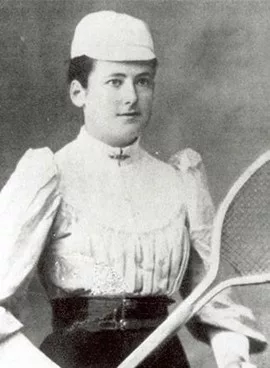
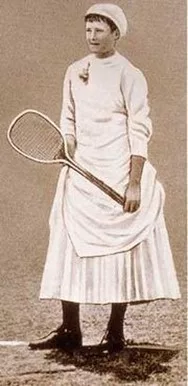
A tennis historian in Canberra, Australia said that “Lottie always spoke out in favour of women being able to dress in a manner that did not impede their tennis”.
Was it Lottie’s trimmed down outfit that helped her ability to win at Wimbledon at her first attempt or was it her height or the way she played? Lottie was 5 foot 6 inches tall which was tall for that time period. She hit a hard forehand, was the first woman to volley “smash”, and served underhand, which made it difficult for people to play against her because her style was unknown to the ladies. She didn’t play in a lady like way, but she made no excuses. Lottie is alleged to have said “As a rule ladies are too lazy at tennis, they should learn to run and run their hardest, not merely stride. They would find, if they tried that, many a ball seemingly out of reach, could be returned with ease; but instead of running hard they go a few steps and exclaim, ‘Oh, I can’t ‘and stop.”
There were only 6 competitors as two of the top players did not enter, she easily advanced through the tournament for the right to play the defending champion Blanche Bingley. Lottie won the tournament in straight sets 6-2, 6-0. The second set only lasted 10 minutes. This made Lottie the youngest winner of the ladies’ singles championships at 15 years 285 days (this record still stands today).
Lottie and Blanche met in the West of England Championships 1888 and Lottie was given a handicap even though it was an “open” tournament, but she still managed to win. They also met again in the Wimbledon final Lottie defended her title successfully winning 6-3, 6-3. During 1888 she also won more doubles titles with her sister Annie and also May Langrishe, and mixed doubles titles with Ernest Renshaw.
The style of play that Lottie adopted was thought to be unorthodox but now it seems normal. Lottie hit the ball just before the top of the bounce and used a single-handed racquet grip, her ground strokes were hit firmly by the standards of the late 1800’s, but like most women of her time she served underhand and rarely got any spin.
Lottie only entered one open tournament in 1889, this was the Northern Championships, which she won and did not go to Wimbledon. Lottie, Annie and some friends had gone on a sailing trip off the coast of Scotland. In 1890 Lottie didn’t take part in any tournaments.
In 1891 Lottie was determined to win Wimbledon 3 times in a row. In 1891 Wimbledon was her only tournament, she went on to win her third Wimbledon title 6-2, 6-1. In 1892 Lottie was beaten an open tournament in the second round of the Irish Championships. Lottie has only ever been beaten five times in her career and this was the first time since she fifteen. The season continued with her competing strongly and winning Wimbledon for the fourth time with an easy straight sets win.
Lottie played her final tournaments in1893, the Northern in Manchester and Wimbledon. Lottie fell heavily in the Wimbledon final but went on to win. Lottie had achieved her goal three consecutive wins at Wimbledon. This record was broken when Suzanne Lenglen won five consecutive tournaments from 1919-1923.
Even though Lottie played in women’s tournaments, she often played matches against men and won.
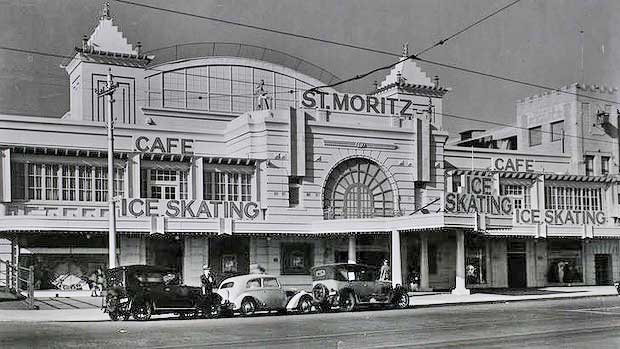
Taking a break in St Moritz
Tennis would always be Lottie’s favourite sport, but she began taking part in other activities. In 1895 Lottie went to St Moritz with her brother Tony and tried some winter sports. Lottie found Ladies Skating, people were impressed by her skills, she was asked to take part in the St Moritz Ladies Skating Test this was the most important figure skating event for women at the time and passed.
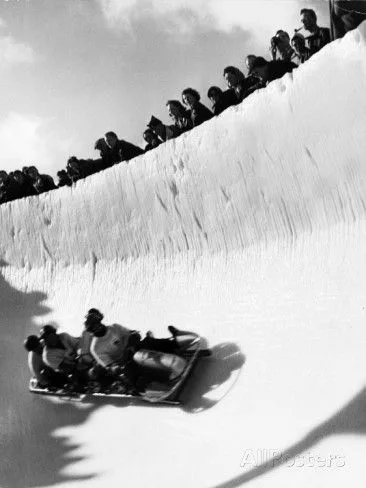
Lottie liked to keep busy between figure skating events so not faint of heart Lottie got on a toboggan and went down the Cresta Run which she was apparently brilliant at and began mountaineering with her brother Tony, climbing two mountains over 4,000m in February 1896.
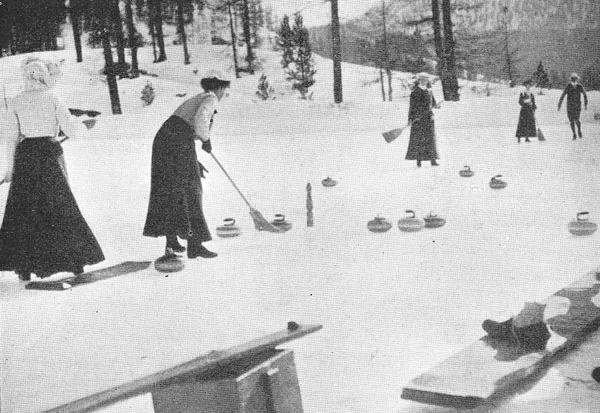
Lottie and Tony spent a long time cycling around Italy before eventually going home.
Later that year Lottie and Tony went back to St Moritz, but this time Willy and their mother went with them. Lottie was so good at the women’s they entered her into the St Moritz Men’s Skating Test which she passed with ease; she was only the second woman to pass the test.
Lottie competed in some curling tournaments and won. In 1897 Lottie and Tony climbed several mountains in Norway.
Field Hockey
Lottie started playing women’s field hockey in 1897 again quite a new sport, she was one of the founding members of Spital women’s hockey club’ Lottie played centre forward and was the captain of the team. The team won all their matches when Lottie played and always seemed to lose when she didn’t.
In 1899 Lottie became captain of the Cheshire county team, she represented her club at the Northern Counties Women’s Hockey Association. Lottie was selected to play for England on 21 March 1899 where they beat Ireland 3-1. In 1900 England beat Ireland 2-1 where Lottie scored both goals. Lottie was not able to play against Wales as she had sciatica, this stopped her from taking part in sport for several months.
Lottie never played national or county hockey after that but played rare games for Spital until 1905.
All the members of Lottie’s family stopped going to sporting events for a while due to the death of their mother on 1 August 1901.
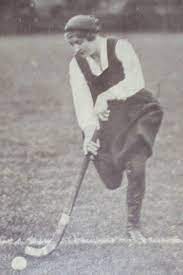
Golf
Lottie started to play golf when she was fifteen and found it quite difficult to master, the game, also most golf clubs did not allow women to play on their courses. By the time Lottie became serious about golf the Ladies Golf Union had been formed making it easier for women to play as it was now classed as a real sport.
With lady’s golf becoming more popular Lottie helped to set up a club at Moreton in 1894, that year she took part in the National Championships match play tournament at Littlestone in Kent, Lottie was eliminated in the third round, but her interest in the sport grew, Lottie became a regular competitor at the National Championships and other tournaments. In 1898 and 1900 Lottie was beaten in the semi-finals. In 1900 there was an unofficial competition England versus Ireland where England won 37-18.
Lottie did not play in any golf tournaments in 1901 and very few in the following two years, in 1904 Lottie played in the British Ladies Amateur tournament that was held at Troon, she qualified for the semi-finals for the third time and this time she won the competition. Lottie was the first woman to win the British tennis and golf championships and still holds that honour to this day.
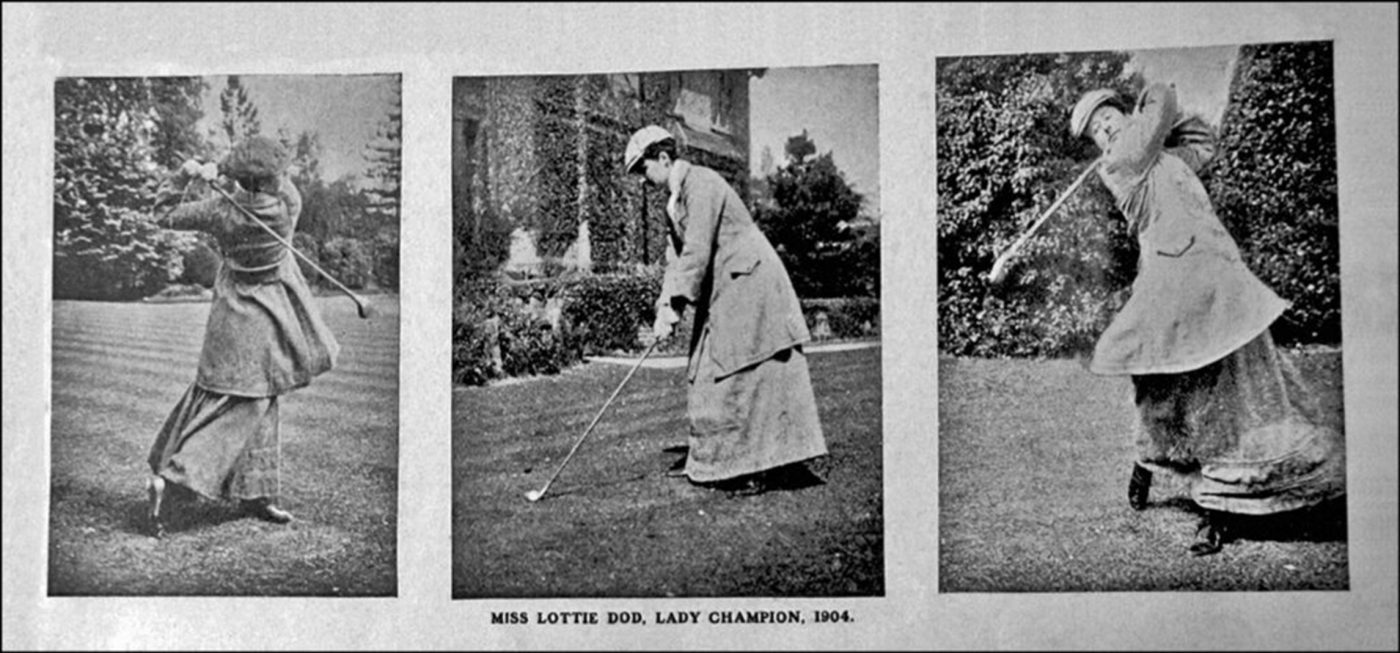
Lottie Dod takes a full swing at the British ladies’ golf championship in 1904. (Courtesy of Sally-Ann Dod, Dod family archives).
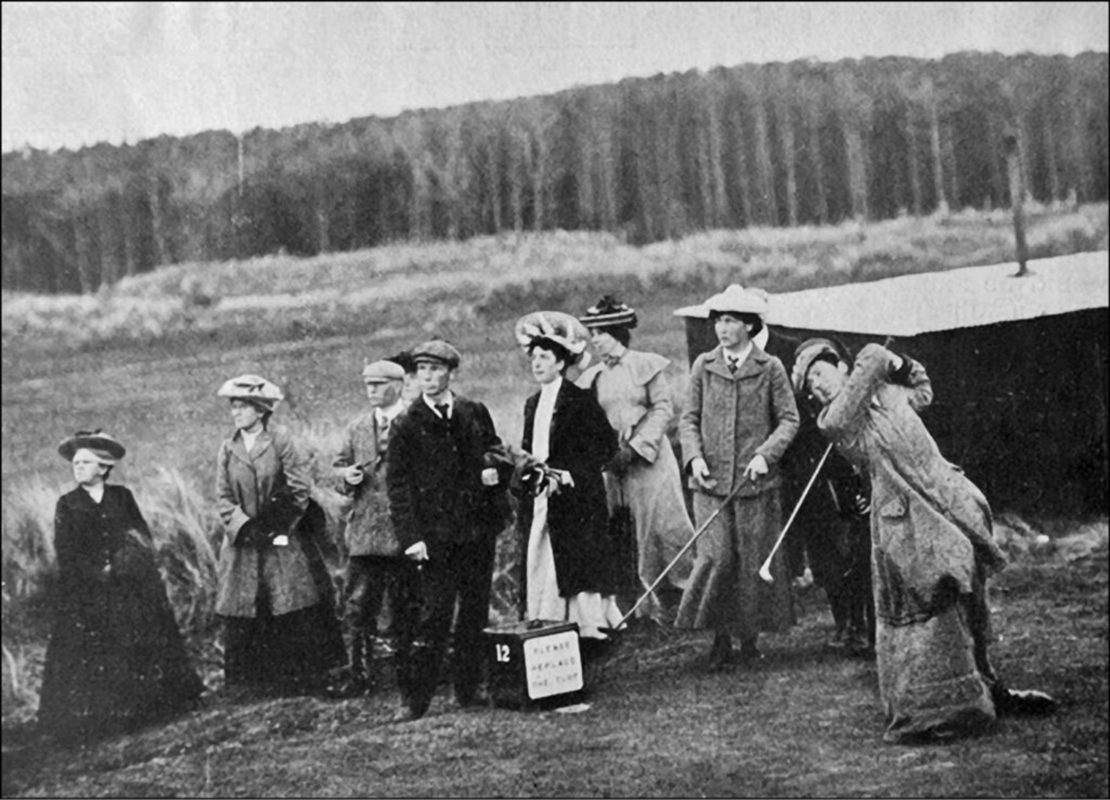
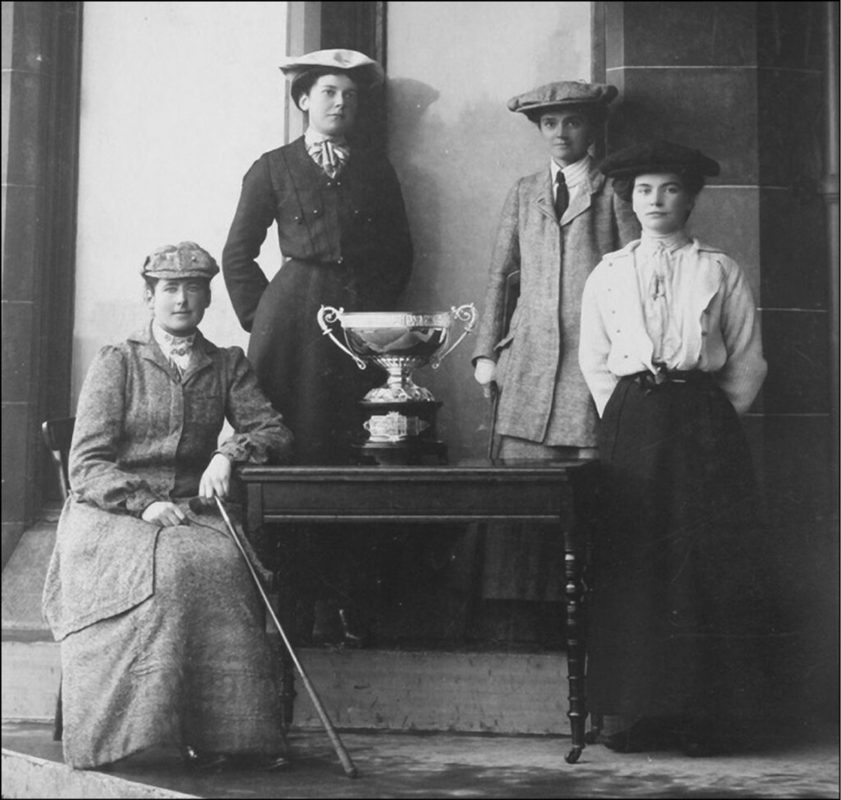
Later that year after her victory at Troon Lottie travelled to Philadelphia, she was invited to attend the
US Women’s Amateur Golf Championships as a spectator, when she arrived the rules had been changed allowing non-Americans to compete, she was disappointed to lose in the first round but was able to persuade some of the American players to come and play in the British Championships the following year.
In 1905 during the week before the British championships there were 3 international matches, the first against America, Lottie lost her match, but England win 6-1, England were defeated by Scotland 3-4 and won against Ireland 4-3, Lottie had lost both her matches. Lottie lost in the fourth round of the National Championships It was her last appearance as a golfer.
Archery
In the autumn of 1905 Lottie, Tony & Willy sold “Edgeworth” their childhood home and moved to a new home near Newbury, Berkshire.
As a family they had been practising archery for many years, but they all became members of the Wellford Park Archers in Newbury and became more serious participants of the sport.
It has been said that one of their ancestors had commanded the English longbow archers at the Battle of Agincourt.
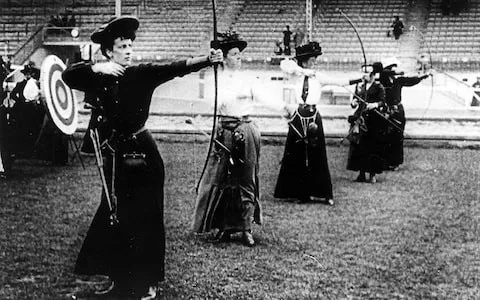
Lottie had won her first tournament by 1906 and had finished in fifth place in the Grand National Archery Meeting of 1906, 1907 and 1908. Her competition results in 1908 saw her being selected onto the British Olympic team, the only team to take part in the women’s archery competition was the United Kingdom. Lottie was leading after the first day but fell behind on the second day to win a silver medal. Her brother Willy did better he won the gold medal in the men’s competition on his 41st birthday.
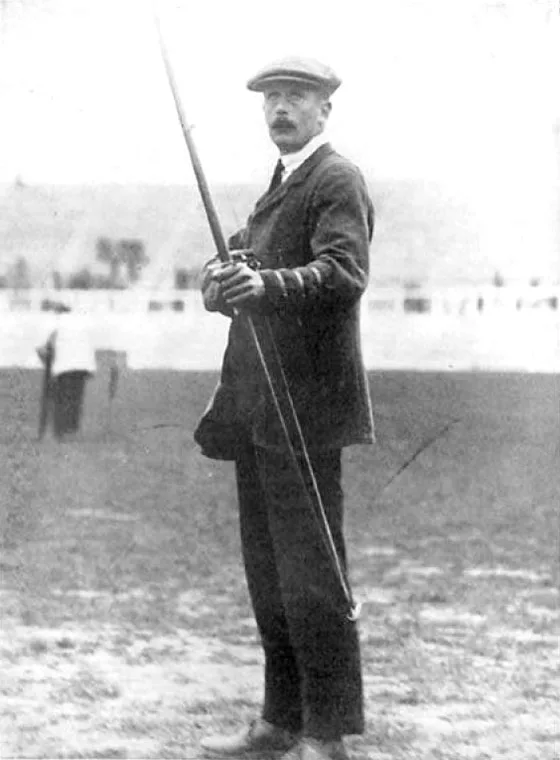
The modern Olympics had only started again in 1896 and no women took part.
In the 1900 Olympics and following in the next few Olympics the few women who competed faced hostility from the Olympic officials.
The president of the International Olympic Committee thought “women athletes served only as titillation and that the games should exalt male athleticism”.
Women’s sports, he maintained, were “against the laws of nature.”
In 1910 Lottie came close to winning the Grand National Archery Meeting, both Lottie and Willy were leading after the first day but moved into second place one the final day of the competition. Unfortunately, the Wellford Park Archers disbanded and with nowhere to practise and no local competition they lost interest in archery.
This was to be the end of Lottie’s competitive sporting career; this was due to her ongoing bouts of sciatica.
Tony married in the early part of 1912, and in 1913 Lottie and Willy moved to a new house in Bideford, Devon.
What Next?
Lottie trained in First Aid and home Nursing skills which became especially useful during the First World War
When World War 1 began, Lottie worked for the British Red Cross from 1916 in Chelsea Voluntary Aid Detachment, 13 Grosvenor Crescent, Belgravia, Chelsea, London and a military hospital in Speen, Berkshire.
Lottie wanted to transfer to the war zones in France but was not allowed to due to her sciatica, so she never served as a nurse outside England. Lottie received the Service Medal by the Red Cross for serving more than 1000 hours during the war.
After the war she continued to live in London and Devon and always attended Wimbledon for the Championships every year until she was in her late eighties. Lottie’s brother Willy died in 1954 and she lived in several nursing homes on the English coast, eventually settling in Birchy Hill Nursing Home in Sway which was less than a mile from her brother Tony and his family. Lottie died 27 June 1960 just 6 months after her brother Tony. Lottie never married and died in bed listening to the Wimbledon commentary on the radio, she was 88 years old.
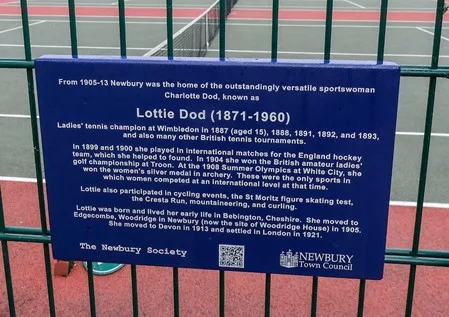
There is also a second blue plaque that has been placed at Lottie and her family’s childhood home, which is now called Charlotte House Care Home, how appropriate giving it that name in remembrance of Lottie.
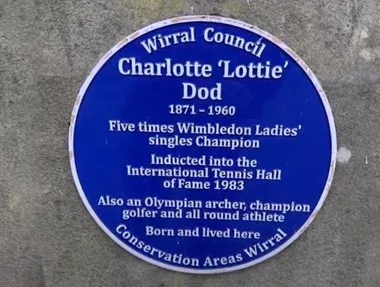
The Wirral View published an article on 8 March 2021.
To celebrate International Women’s Day, Wirral Council is spotlighting the fantastic sporting achievements of Lottie Dod, the five times Wimbledon winner who was born and lived in Bebington, and whose achievements have recently been commemorated with a prestigious blue plaque.
Lottie Dod (1871 – 1960) was best known as a tennis player though she excelled in many other sports, including golf, hockey and archery.
She started playing tennis at age 11 and won the Wimbledon Championships for the first time when she was only fifteen, in the summer of 1887. Defeating the defending champion Blanche Bingley 6-2, 6-0, Dod remains the youngest player to win the women’s singles tournament.
Apart from entering women’s tournaments, Dod sometimes also played and won matches against men, on one occasion defeating star players Ernest Renshaw and George Hillyard (the husband of Blanche Bingley) when doubling with Herbert Baddeley. Dod was elected to the International Tennis Hall of Fame in 1983.
Lottie’s sporting successes were not confined to tennis. She won the British Ladies Amateur Golf Championship, played twice for the England women’s national field hockey team (which she helped to found), and won a silver medal at the 1908 Summer Olympics in archery. Her interests also included winter sports: figure skating, tobogganing on the Cresta Run, mountaineering and curling. Other achievements included helping to establish a ladies’ golf club at Moreton in 1894, and during the first world war, receiving a Service Medal by the Red Cross for serving more than 1,000 hours as a nurse.
The Wirral View also spoke to Fiona Hanik, Wirral’s tennis development officer and she said: “On International Women’s Day, what better time to celebrate the achievements of Lottie Dod.”
“She was a prodigious sporting talent and an inspiration to young sportswomen everywhere.”
“At this time when we all look forward to getting out and about, and with outdoor tennis expected to open up again from March 29, I hope Lottie’s story will encourage women of all ages to pick up a racket again or have a go at some different sports until they find one, they love and can stick with.”
“There really is something out there for everyone.”
Councillor Tom Anderson, chair of Wirral Council’s tourism, communities, culture and leisure committee, also said: “I can’t think of many people more worthy of a blue plaque than our very own sporting superstar, Lottie Dod.”
“The plaque is such a lovely way to highlight the close association Lottie had with our area and shows how proud we are of her.”
“I’m sure it will inspire more people to learn about Lottie’s incredible achievements and help to foster an even greater appreciation for our rich local history.”
By the time Lottie died she and her sporting achievements were long forgotten, she had virtually disappeared from sports history.
It is nice to know that her prowess is now being remembered by blue plaques at two venues connected with her life.
Let us not forget her brother Willy.
William Dod
Although Willy was an Olympian, we were not able to find very much about him.
During the life story of Lottie, we spoke about Willy, he joined Wellford Park Archers in Newbury, within two and a half years Willy had become an Olympic Champion. Willy had surged ahead of his nearest competitor even though it was held in torrential rain, the second day there was no rain but the wind was swirling making the conditions very difficult, but Willy surged ahead and took the Gold Medal Pyrecroft Road, Chertsey,
Willy continued with his success by winning the Grand National Archery title, this was the equivalent of the British National title, in 1909 and 1911. Willy retired from competition after 1911 and began playing golf again.
In 1912 Willy reached the fourth round of the British Amateur Championship.
Willy joined up after the outbreak of World War 1 he was in the Royal Fusilier’s and served as a Private in the trenches for a short time before his application to transfer to the Royal Navy was successful.
Willy was commissioned in the Royal Navy Volunteer Reserve in 1915, he spent a year as an administrative officer with the Royal Navy Air Service, in 1916 he was invalided back to England.
Lottie and Willy moved to Westward Ho, in Devon and played golf during their retirement.
Willy moved back to London in his eighties and died in Earl’s Court in 1954.
Family
We must remember the whole family.
There don’t seem to be any indication that Annie carried on pursuing any sports after her marriage.
Annie married Eric Taylor Worssam a Brewer from Middlesex in Bebington in July 1899, then moved to London, where they had three children.
Eric died in 1916 and in 1918 we know Annie had moved into Pyrcroft House, Pyrcroft Road, Chertsey, Surrey, England where she lived until she died on 27 August 1927.
Tony lived a much less documented life than Lottie and Willy, even though he enthusiastically played golf, took part in archery and played chess, climbed mountains, took part in winter sports and cycled he did not aspire to the same heights as Lottie or Willy.
He married Evelyn Francis Howard in early 1912 in Wantage, Surrey, Tony settled down to the busy life of a Dairy Farmer, dying on 17 Jan 1960 at Arnewood Corner, Sway, New Forest, Hampshire, England.
Thank you to Sally-Ann Dod for allowing photos to be used in the Public Domain from the Dod Family Archive.
Websites used to help compile this this Case Study:-
en.wikipedia.org/wiki/Lottie_Dod
www.tennisfame.com/hall-of-famers/inductees/lottie-dod
www.lottie.com/blogs/strong-women/lottie-dod
teamgb.com/athlete/lottie-dod/STPVRIdaQd52dtd3UNWEdt
http:www.insidethegames.biz/articles1099238/blue-plaque-unveiled-to-lottie-dod
wirralglobe.co.uk/news/19144200.blue-plaque-honour-wirrals-incredible-lottie-dod/
telegraph.co.uk/only-in-britain/sporting-star-lottie-dod-born/
wirralview.com/features-news/Wirral-world-new-blue-plaque-celebrates-one-greatest-spotswoman-all-time
c.s.mcgill.ca/~rwest/wikispeedia/wpcd/wp/I/Lottie_Dod.htm
assignmentpoint.com/arts/biography/biography-of-lottie-dod.html
www.playingpasts.co.uk/articles/gender-and-sport/the-gifted-lottie-dod-part-2/
the3rdimagazine.co.uk/2013/05/lottie-dod/
blog.britishnewspaperarchive.co.uk/2012/06/29/lottie-dod-the-youngest-winner-of-the-ladies-singles-at-wimbledon/
msmagazine.com/2020/08/08/little-wonder-lottie-dod-worlds-first-female-sports-superstar/
harkaround the greats.wordpress.com/2019/04/29/the-little-wonder-lottie-dod/
Click here to return to the Case Studies Menu Page!We are Professional Genealogists and Family History Researchers offering our services and experience to help others, who either through the lack of time or in-depth experience have got stuck or just need a little extra help with their family research projects.
As a guide, we have put together a range of different services and packages to suit every budget or requirement, be it a one-off record that needs checking or an entire tree you would like our help building, we are happy to offer our experience and abilities to help you.
SEE OUR SERVICES CONTACT US